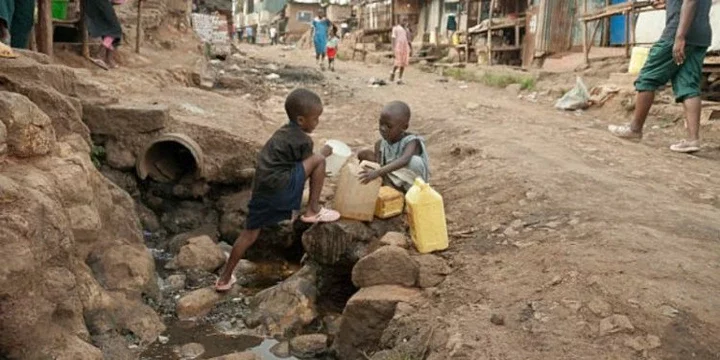
Ever wondered which states in Nigeria have the lowest income and standard of living? You're about to find out. We analyzed data from several reports on poverty, unemployment, income levels, and cost of living in Nigeria to determine which states are struggling the most economically. The results may surprise you. Some of the states that made our list are dealing with factors like lack of industrialization, over-dependence on oil, and the impact of insurgency on trade and tourism. If you think you know which states in Nigeria are the poorest, get ready to see if you're right. Here are the top 15 poorest states in Nigeria in 2023, according to our research. How did your state fare? Read on to find out.
15 Poorest States in Nigeria in 2023
Our research has revealed the top 15 poorest states in Nigeria in 2023, and the findings are quite alarming. These states are facing a myriad of challenges ranging from poor infrastructure, lack of investment, and unfavorable economic policies. The impact of these challenges has been felt by the citizens of these states, resulting in a low standard of living and a high poverty rate.
The top 15 poorest states are Sokoto, Kebbi, Zamfara, Kogi, Taraba, Adamawa, Bauchi, Gombe, Ebonyi, Plateau, Benue, Yobe, Borno, Jigawa, and Niger. These states have consistently ranked low in various economic and social indicators, such as per capita income, literacy rates, and access to basic amenities like healthcare and education.
The lack of industrialization and diversification of the economy in these states is a major contributing factor to their economic woes. Most of these states are heavily reliant on agriculture and, in some cases, oil exploration, which has not yielded significant returns due to factors like insecurity and lack of infrastructure. Also, the high rate of unemployment and underemployment in these states has further exacerbated the poverty situation.
Sokoto State: The Poorest State in Nigeria with 87.73 Percent Poverty Rate
Sokoto state has the highest poverty rate in Nigeria, with a staggering 87.73 percent of its population living below the poverty line. Despite its vast natural resources, such as gold, limestone, and clay, the state has struggled to translate these resources into wealth for its people. For a state with over 6 million people, this level of poverty is tragic.
Agriculture is the primary occupation, with crops such as rice, wheat, and millet being grown. However, the lack of modern farming techniques and infrastructure has led to low yields and inadequate food supply, exacerbating the poverty crisis.
Furthermore, the state has been plagued by insecurity, with frequent clashes between farmers and herders leading to displacement and loss of life. This has also disrupted trade and further deepened poverty.
Efforts are being made to address the poverty crisis in Sokoto, with the government implementing various programs to support small businesses and improve access to education and healthcare. However, these efforts remain insufficient, and more needs to be done to address the root causes of poverty in the state.
Taraba State: 87.72 Percent Poverty Rate
With an 87.72 percent poverty rate, Taraba State is the second poorest state in Nigeria. Taraba's economy depends heavily on agriculture, with most residents engaged in subsistence farming and livestock rearing. However, poor infrastructure, lack of job opportunities, and communal clashes have severely limited economic growth in the state. Providing education, healthcare, clean water, and other basic amenities to Taraba's impoverished citizens should be a top priority to improve living standards, increase incomes, and lift more people out of extreme poverty.
Jigawa State: 87.2 Percent Poverty Rate
Jigawa State is arguably one of the poorest states in the northern region of Nigeria, with a poverty rate of 87.2%. The state's economy depends primarily on agriculture, employing over 90% of the population, mainly subsistence farmers. However, low agricultural productivity, lack of irrigation, and overgrazing have contributed to the high level of poverty.
The harsh climate with little rainfall also makes it difficult for crops and livestock to thrive, limiting economic opportunity. Basic infrastructure like access to healthcare, education, electricity, and clean water are lacking for much of the population.
With limited economic prospects, especially for youth, out-migration is common as people seek opportunities elsewhere. For those who remain, poverty alleviation programs and improved access to resources are desperately needed to build a path out of poverty for Jigawa residents.
Ebonyi State: 79.76 Percent Poverty Rate
Ebonyi State has a poverty rate of 79.76 percent, making it the 4th poorest state in Nigeria.
The majority of Ebonyi residents live in rural areas and work in agriculture, fishing, and mining. Subsistence farming is common, with the main crops being rice, yam, cassava, and maize. The state also has large deposits of lead, zinc, salt, and limestone, though mining activities are still small-scale.
Despite the natural resources, lack of infrastructure and social services has hindered economic growth in Ebonyi State. Most communities lack basic amenities like healthcare, education, potable water, and electricity. The high poverty level has also led to other socio-economic problems like unemployment, illiteracy, diseases, and high mortality rates.
The government needs to invest more in developing key sectors like agriculture, mining, and tourism to improve living standards, create job opportunities and boost the economy in Ebonyi State. Building critical infrastructure and improving access to basic social services could help lift many out of poverty. With its agricultural and mineral potential, Ebonyi has the resources to become one of Nigeria's most prosperous states.
Adamawa State: 75.41 Percent Poverty Rate
Adamawa state has faced immense hardship, with over 75% of its citizens living in poverty. Located in the North-East region, it has dealt with poor infrastructure, lack of economic opportunity, and the impact of Boko Haram terrorism.
There is a need for the government and relevant stakeholders to invest in modern farming techniques, provide access to credit facilities, and improve security in the state. This will help to boost agricultural productivity, create employment opportunities, and reduce the poverty rate in the state.
Zamfara State: 73.98 Percent Poverty Rate
Zamfara state has a poverty rate of 73.98% due to a lack of infrastructure and job opportunities. In addition, the state faces high levels of insecurity, with banditry and other forms of criminal activity on the rise. This has made it difficult for businesses to thrive and for people to engage in economic activities, further perpetuating the cycle of poverty.
The state struggles with:
Poor education and healthcare systems. Schools and hospitals lack basic amenities and qualified professionals.
Inadequate road networks make transportation difficult. Many communities are cut off during the rainy season.
Overdependence on agriculture and mining. Most people work as subsistence farmers or in artisanal gold mining. Earnings are low and inconsistent.
The government needs to invest in infrastructure, education, healthcare, and job creation to uplift citizens from poverty. Diversifying the economy beyond agriculture and mining can open up more sustainable income opportunities. Improving security will make Zamfara a more attractive place for businesses to invest in.
Yobe State: 72.34 Percent Poverty Rate
Yobe State has a poverty rate of 72.34% due to lack of industries and viable economic activities. The majority of citizens in Yobe live in rural areas and work as farmers, herders, or fishermen. However, frequent droughts, lack of irrigation, and poor soil quality often lead to low crop yields and livestock deaths. This results in food insecurity, malnutrition, and low incomes for many families.
The literacy rate in Yobe is also quite low at just over 40%, limiting people's ability to acquire skills for better-paying jobs. The state government's efforts to build new schools, improve healthcare and develop infrastructure have been hampered by security issues like Boko Haram attacks and kidnappings in the region.
All of these factors have made Yobe one of the poorest states in Nigeria. Alleviating poverty here will require coordinated action across government, non-profits, and private organizations to spur economic growth, improve education and healthcare, enhance security, and build resilience against climate change. With the right investments and policies, Yobe has the potential to lift much of its population out of extreme poverty over the next decade.
Niger State: 66.11 Percent Poverty Rate
Niger State has a poverty rate of 66.11%, making it one of the poorest states in Nigeria. There are limited job opportunities and means of earning a living for most citizens. Agriculture is the main economic activity, with farmers primarily engaged in crop and livestock production, as well as fishing along the Niger River. However, low crop yields and lack of agricultural technology have made it difficult for farmers to rise out of poverty.
The state also has deposits of gold, limestone, and clay, but mining activities are largely underdeveloped. The majority of residents live in rural areas, with lack of access to basic infrastructure, education, and healthcare services. All of these factors have contributed to the high poverty levels, as people struggle to meet even their most basic needs. Significant investments in agriculture, job creation, and social programs are urgently needed to improve living standards and boost the economy in Niger State.
Gombe State: 62.31 Percent Poverty Rate
Gombe state has a poverty rate of 62.31% and is ranked the 9th poorest state in Nigeria. With a population of over 3.9 million, the majority live in extreme poverty.
Gombe state is also plagued by insecurity. It is located in the country's northeastern region, where insurgency has become the norm. As a result, the state's poverty rate has risen to 62.31%.
Motorists in the state have expressed dissatisfaction with the status of some roads in Gombe. The flood has washed away a substantial portion of the roads.
Enugu state State: 58.13 Percent Poverty Rate
Enugu state is one of the poorest states in Nigeria, with a poverty rate of 58.13 percent.
Enugu's economy depends heavily on coal mining and agriculture. However, coal mining activities have declined in recent decades. Farming is mainly subsistence, focusing on crops like yams, cassava, and maize. The lack of large-scale commercial farming and mining has limited job opportunities and economic growth.
Katsina State: 56.42 Percent Poverty Rate
Katsina state is another state in Nigeria that has been grappling with high levels of poverty. The state, which has a population of over 5 million, people, has a poverty rate of 56.42%. Like many other states in the country, Katsina state's economy is largely based on agriculture, with crops like cotton, maize, and groundnuts being major sources of income.
However, the state has been facing multiple challenges that have contributed to the high poverty rate. One of the major challenges is the lack of access to credit facilities, which makes it difficult for farmers to access funds to invest in their farms. This has led to low productivity and low incomes, making it difficult for farmers to provide for their families.
In addition, the state's infrastructure is underdeveloped, with poor road networks and inadequate access to healthcare and education. This has made it difficult for people to access basic services and has contributed to the high poverty rate.
To address these challenges, the government and relevant stakeholders need to work together to create an enabling environment for economic growth and development. This will require investment in infrastructure development, job creation programs, and access to credit facilities for farmers.
In addition, there is a need to promote entrepreneurship and support small businesses, which can help to create jobs and drive economic growth. By working together, the people of Katsina State can overcome their challenges and build a brighter future for themselves and their families.
Nasarawa State: 57.3 Percent Poverty Rate
Nasarawa state has a poverty rate of 57.3%, one of the highest in Nigeria. With most of the population living in rural areas and relying on subsistence farming, poverty remains endemic.
Basic social services like healthcare, education, and infrastructure are lacking. Many communities don't have access to clean water, electricity, or good roads. This makes it difficult for businesses to set up shop and provide jobs.
The high poverty rate is exacerbated by the following:
Low agricultural productivity from poor farming techniques and lack of investment.
High unemployment, especially among youth.
Rapid population growth straining resources.
Insecurity from conflicts displacing people and disrupting trade.
For the citizens of Nasarawa, daily life is a struggle. But with the right policies and programs in place, this state has the potential to lift many out of poverty by developing human capital, supporting small businesses, and modernizing key sectors like agriculture. There is always hope.
Plateau State: 55.1 Percent Poverty Rate
Plateau state is Nigeria's 12th poorest state, with a 55.1 percent poverty rate. The state's mountainous terrain and underdeveloped infrastructure have made economic progress difficult. The state's rocky highlands and plateaus, from which it gets its name, make transportation and trade challenging. Poor road networks isolate much of the population, limiting access to jobs, healthcare, and education.
Kano State: 55.1% Percent Poverty Rate
Kano is the most populated state in Nigeria. Despite being a commercial center, the state has a poverty rate of 55.1%. The high poverty rate is attributed to a number of factors, including low levels of education, inadequate access to healthcare, inter-religious strife, terrorist assaults, and poor infrastructure.
Kano state has a decent road network; nonetheless, maintenance has always been an issue.
Kebbi State: 50.2 Percent Poverty Rate
In 1991, Kebbi State was separated from Sokoto State to form a new state in Nigeria's North West. Kebbi borders Niger Republic and Benin Republic; despite its vast land area, the state has a population of only roughly 4.4 million people.
Agriculture is the main economic activity in Kebbi, with the riverine floodplains yielding cash crops such as peanuts, cotton, and rice. Sorghum, millet, cowpeas, and onions are also grown in small quantities throughout the state. However, animal husbandry is the most important economic activity; cattle, goats, and sheep are herded. Due to lack of modern types of machinery, poor infrastructure, and poor education, kebbi is one of the poorest states in Nigeria.
Conclusion
In conclusion, one of the key factors that contribute to poverty in these states is the lack of access to education. Many children in these regions are unable to attend school due to various reasons, including the high cost of tuition fees, inadequate infrastructure, and limited access to educational resources. To address this issue, there is a need for increased investment in education infrastructure and resources, as well as the implementation of policies that make education more accessible to all children, regardless of their socio-economic status.
Another factor that contributes to poverty in these states is the lack of access to healthcare services. Many communities in these regions do not have adequate medical facilities, and many people are unable to afford the cost of healthcare services. To address this issue, there is a need for increased investment in healthcare infrastructure and resources, as well as the implementation of policies that make healthcare more affordable and accessible to all.
Additionally, the lack of access to credit facilities for farmers and small business owners is another factor that contributes to poverty in these regions. Many farmers and small business owners are unable to access the capital they need to grow their businesses, which limits their potential for economic growth and development. To address this issue, there is a need for increased investment in credit facilities and the implementation of policies that make credit more accessible to these groups.
Finally, the poverty situation in these states is a wake-up call for all stakeholders to take action. The government, private sector, and civil society must come together to address the underlying issues that have contributed to the poverty situation in these states. There is no doubt that with the right policies and investments, these states can achieve significant progress and improve the lives of their citizens.

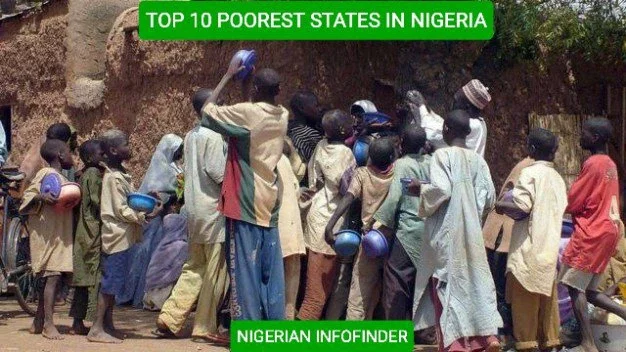
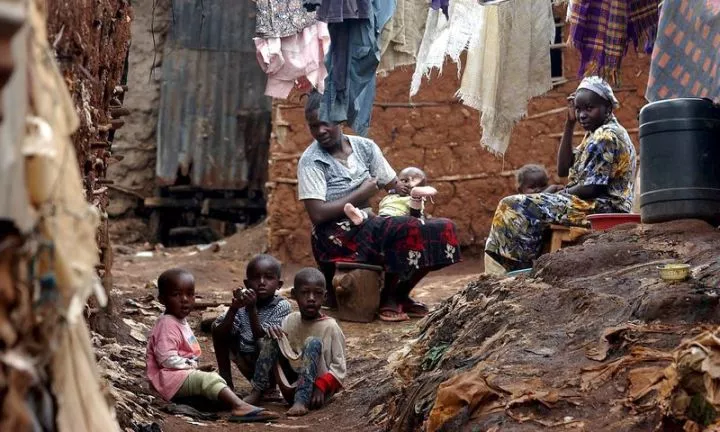
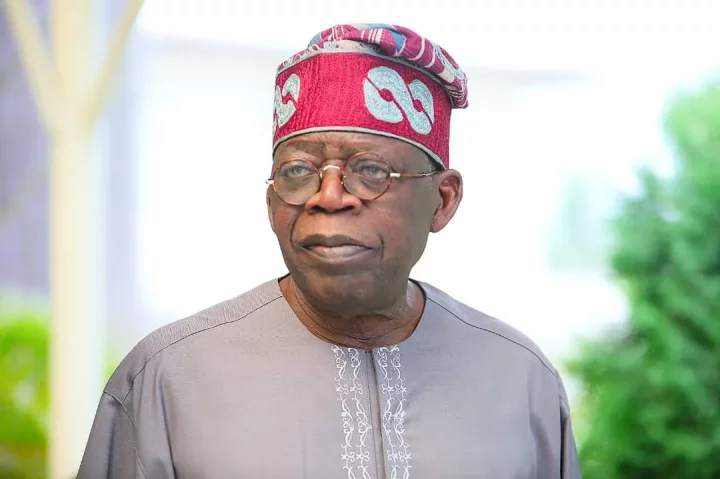
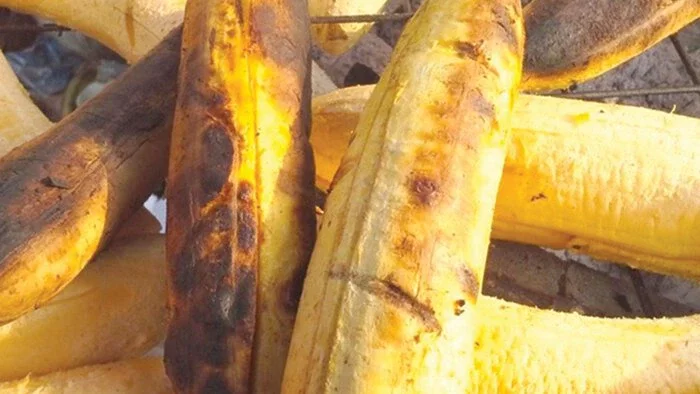
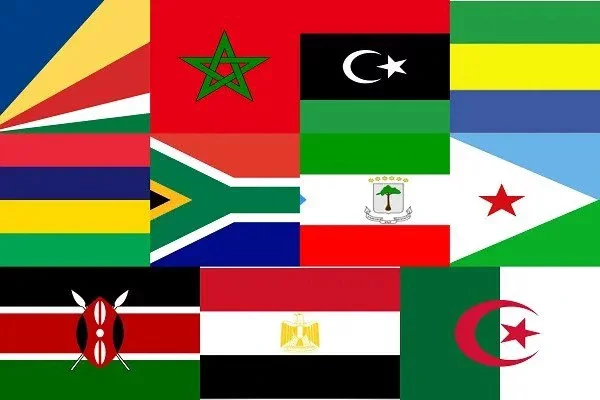
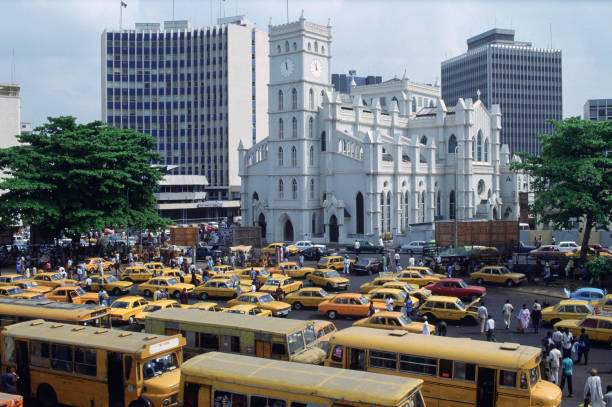

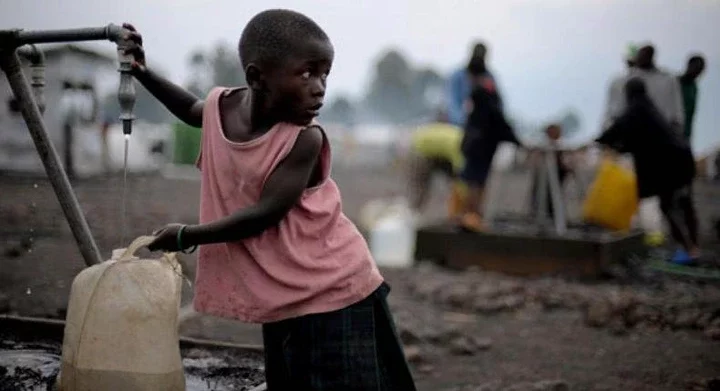







Comments